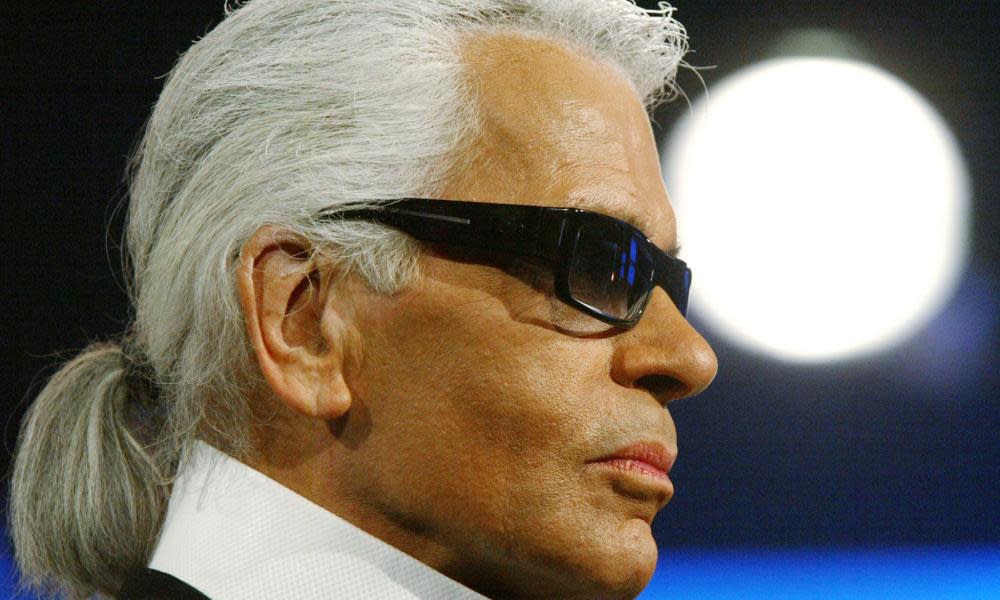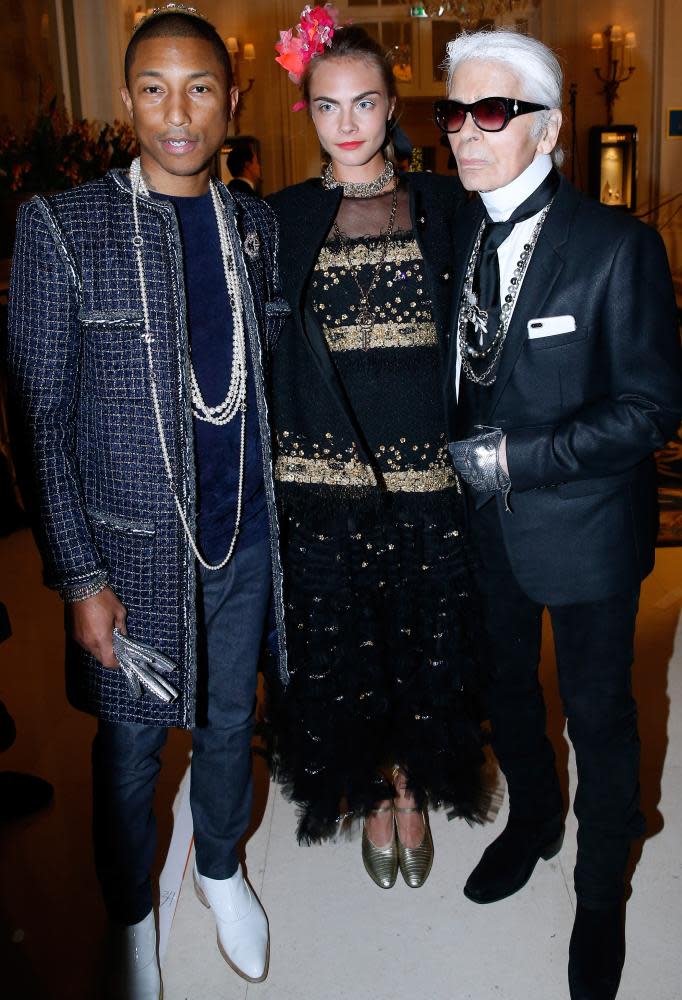‘The Hitchcock of fashion’: Met Gala to pay tribute to Karl Lagerfeld

Fun, Fendi but hopefully no fur, the 65-year career of the late fashion designer Karl Lagerfeld will be the subject of a blockbuster exhibition at the Metropolitan Museum of Art in New York next spring, as well as the celebratory benefit – or Met Gala – in May.
Speaking at a press conference in Paris, Anna Wintour, the editor of US Vogue and the exhibition’s honorary co-chair, said the idea came shortly after Lagerfeld died in 2019.
Describing the designer as a friend, the king of commerce, an intellectual and “one the most well-read people I’ve ever known”, she said: “Karl would be rather alarmed at the idea of his clothes appearing in a museum.
“He loathed the idea of fashion standing still enough to be admired at a backward glance.”
Originally scheduled for 2021, the event was postponed because of the Covid pandemic.
The exhibition’s full title, Karl Lagerfeld: a Line of Beauty, is named after Hogarth’s 1753 theory of aesthetics as outlined in The Analysis of Beauty and will focus on the transformation of Lagerfeld’s 2D sketches into 3D clothes.
More than 150 garments will be on display, spanning the designer’s career as the creative director of Chloé, Fendi, Chanel, his Karl Lagerfeld label and his work at Balmain and Patou.
The exhibition will be anchored by two lines of beauty – one straight, one serpentine – culminating with 10 looks that focus on Lagerfeld’s ironic side.
The clothes will most likely be informed by his black and white uniform and contain an aphorism or Karlism, which include the pandemic’s often quoted “sweatpants are a sign of defeat”.
At the time of his death, Lagerfeld was the creative director of three labels – Chanel, Fendi and his eponymous label. But as fans of his aphorisms (“trendy is the last stage before tacky”) and his cat (Choupette) can attest, the designer’s influence extended far beyond the catwalk, epitomising the way fashion permeated wider culture. It is likely the clothes at the gala, which will be inspired if not designed by Lagerfeld, will nod to his tentacular reach.
A mercurial figure rarely seen without sunglasses, high-collar Hilditch & Key shirts, driving gloves, his beloved Diet Coke and peculiar snow-white ponytail, Lagerfeld was that rare thing – a designer as famous as the people he dressed.

“He was the Hitchcock of fashion,” said Andrew Bolton, the curator in charge of the Costume Institute. “There was always a representation of Karl on his runway.”
It is likely his trademark image, as famous as a stamp, will appear in some form on the red carpet in May.
Among the celebrity hosts (which last year included the poet Amanda Gorman and before that Harry Styles) is likely to be Pharrell Williams, who regularly wore Lagerfeld’s Chanel to public events. Speaking at the press conference, the musician said: “I first heard about Chanel through Notorious BIG in the 90s,” said Williams. “Forgive me for [saying] this, but I associate Karl with Chanel far more than Gabrielle [Bonheur “Coco” Chanel].
“I feel super lucky to have experienced him. No pun intended.”
This is only the third time the Met has curated a designer-focused show, after Alexander McQueen in 2011 (who died in 2010) and the Japanese Comme des Garçons founder Rei Kawakubo in 2017.
Bolton agreed with Wintour that Lagerfeld would be “100% horrified by the idea of it and that he never tired of telling me that fashion was not art and fashion should not appear in a museum”, but described the exhibition as more of an essay than a retrospective. “We knew he’d rather look forward than backwards,” he said.
The theme is not a complete departure from last year’s controversially “out of touch” gilded glamour, which came under scrutiny for its timing with the global economic crisis following the pandemic. Lagerfeld’s creations, which include boucle suiting and supersized pearls at Chanel, faux fur at Chloé, quilting on everything from dresses to handbags, and gowns emblazoned with arch bucolic motifs, not to mention the double C logo, routinely strayed into four figures.
Nor is the designer without controversy. After losing more than 90lbs with a strict diet, which he later documented in a book, he famously described Adele as “a little too fat” and in 2017 caused outrage when he evoked the Holocaust in reference to German chancellor Angela Merkel’s immigration policy.
It would be remiss to ignore Lagerfeld’s relationship with fur, which began in the late 1960s at Fendi. “It is [complicated]” Bolton said. “We don’t collect fur any more, we just have historical pieces, but they were so much part of his legacy, so we are including some pieces. I don’t believe in censoring history, I believe in contextualising it.
“I would like to reach out to Peta to let them know what we’re doing and what they think. They will have their own opinion.”
As to whether we will see Fendi fur on the red carpet in May, Bolton replied: “I don’t think we’ll see it at the gala, though. No. No.”

 Yahoo Movies
Yahoo Movies 
